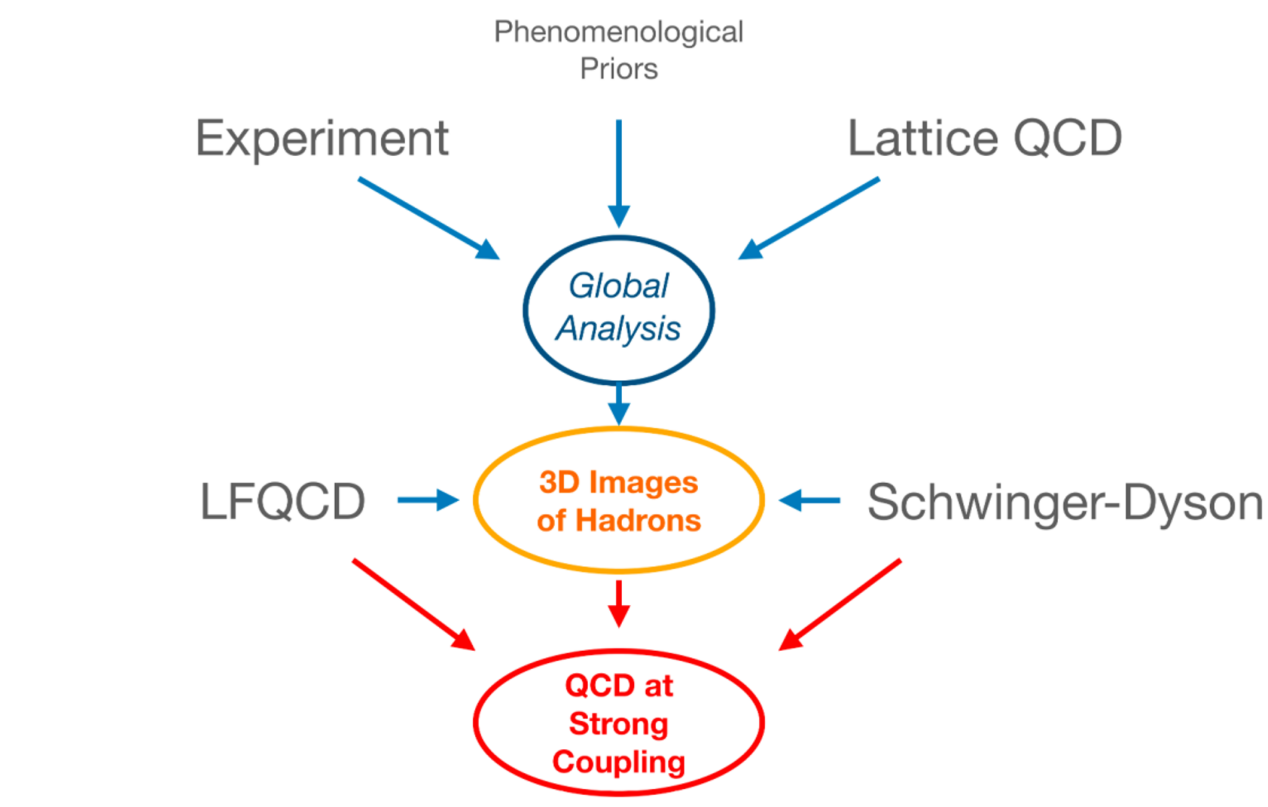
Researchers from the Institute of Modern Physics (IMP) of the Chinese Academy of Sciences (CAS), together with their collaborators from the Instituto Tecnológico de Aeronáutica in Brazil and Iowa State University, have theoretically explored the influence mechanism of quark-gluon interactions on the parton distribution functions (PDFs) within hadrons, providing new insights into first-principles calculations of hadron structure.
Their findings were published as a letter in Physical Review D on June 16.
Hadrons are essential building blocks of the universe. These composite particles, which are composed of quarks and gluons, include protons, neutrons, pions, and others. Investigating the behavior of quarks and gluons within hadrons is crucial for unraveling the mysteries of the microscopic structure of matter.
In this study, the researchers employed the Basis Light-front Quantization (BLFQ) framework to study the structure of the pion by solving for the PDFs of quarks and gluons within it. The calculations were based on a light-front Hamiltonian that incorporates effective color confinement and first-principles Quantum Chromodynamics.
The researchers then compared their results with those obtained using another method, the Minkowski-space Bethe-Salpeter Equation (BSE), and analyzed the effects of parameters such as the gluon mass and constituent quark mass on PDFs. They found that quark-gluon vertex interactions significantly influence the quark-antiquark-gluon components of the pion's light-front wavefunction and the associated gluon PDFs.
Based on their cross-comparison of the two methods in the pion research, the researchers suggested that further increasing the number of dynamical gluons in the BLFQ framework could drive the mass splitting between the pion and rho meson and enhance non-valence contributions to the quark PDFs in the low-x region.
This study deepens our understanding of how quark-gluon interactions shape hadron structures and lays a foundation for future first-principles calculations of three-dimensional hadronic structures using the BLFQ method.
This work was supported by the National Natural Science Foundation of China, CAS, the Gansu Provincial Natural Science Foundation, and the Senior Scientist Program funded by Gansu Province.

A relationship diagram of hadron structure models. (Image from J. Phys. G: Nucl. Part. Phys. 48 (2021) 075106)

86-10-68597521 (day)
86-10-68597289 (night)

52 Sanlihe Rd., Xicheng District,
Beijing, China (100864)

